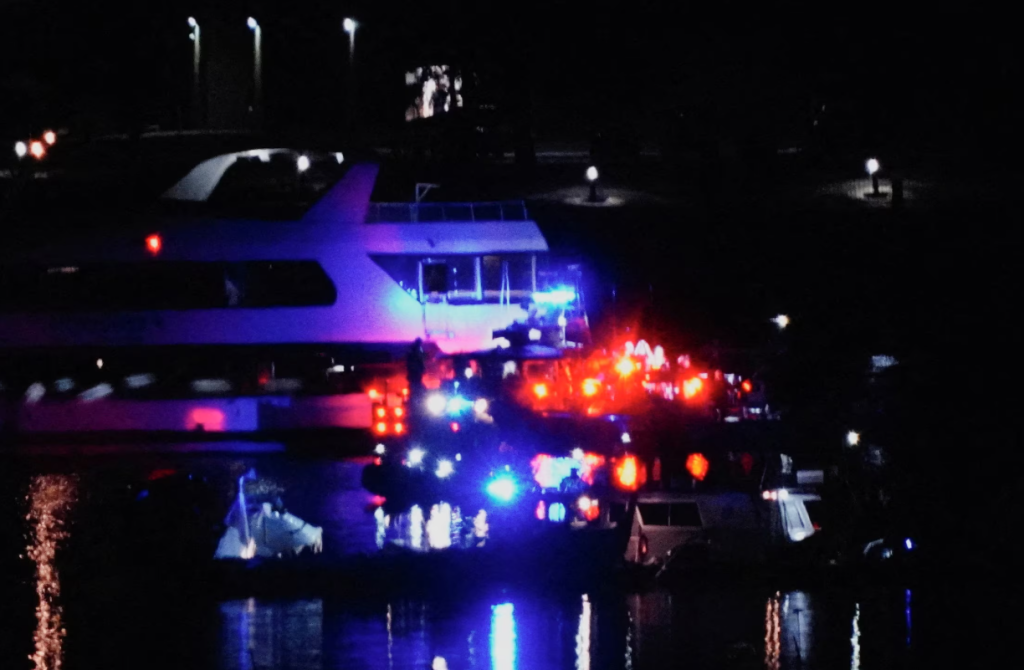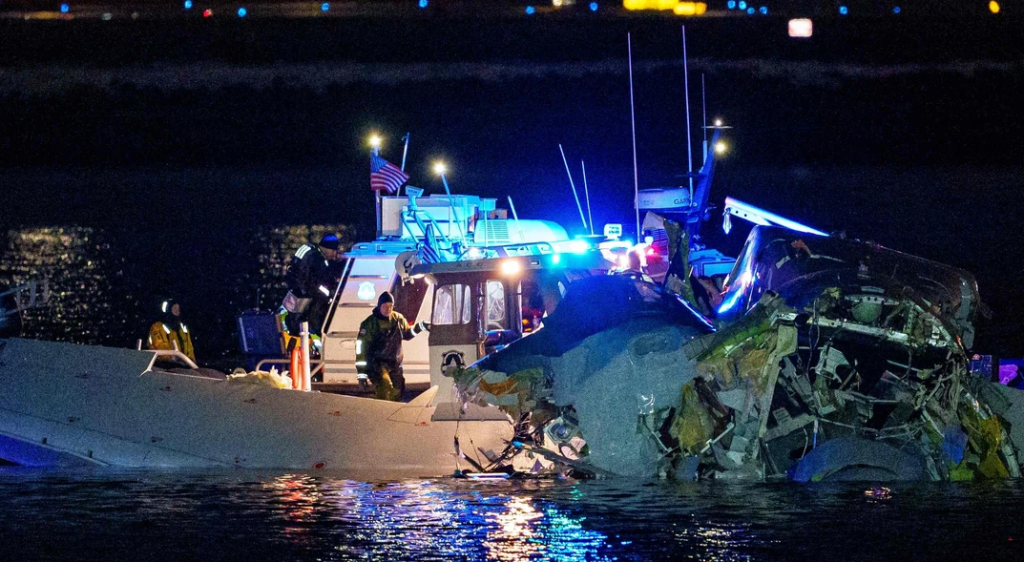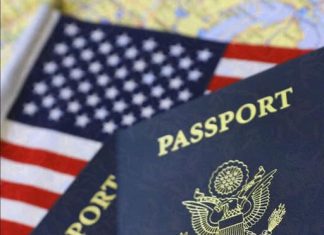On the evening of January 29, 2025, a devastating mid-air collision occurred over the Potomac River near Washington, D.C., involving an American Airlines regional jet and a U.S. Army Black Hawk helicopter. This tragic incident resulted in the loss of all 67 individuals on board both aircraft, marking one of the most catastrophic aviation accidents in recent U.S. history.

Details of the Collision
American Airlines Flight 5342, a regional jet en route to Ronald Reagan Washington National Airport, was carrying 60 passengers and four crew members. Concurrently, a U.S. Army UH-60 Black Hawk helicopter, with three soldiers aboard, was conducting a routine training mission originating from Fort Belvoir. At approximately 8:47 p.m., as the jet was on its final approach to the airport, the two aircraft collided at an altitude of about 300 feet. The impact caused both to plummet into the Potomac River, leaving no survivors.
Immediate Aftermath
Emergency response teams were promptly dispatched to the crash site. Rescue operations were significantly hampered by the darkness and freezing temperatures, complicating efforts to recover victims and debris. Within hours, 28 bodies were retrieved from the river, with ongoing searches for the remaining victims. The incident led to the temporary closure of Reagan National Airport, resulting in numerous flight cancellations and widespread disruption.
Investigation Insights
Preliminary investigations by the National Transportation Safety Board (NTSB) have highlighted potential factors contributing to the collision. Notably, the air traffic control tower was operating with only a third of its required personnel, leading to increased workloads and potential lapses in communication. An air traffic controller, managing dual responsibilities due to the staffing shortage, instructed the helicopter to maintain visual separation from the jet. However, miscommunication ensued, resulting in the helicopter maneuvering incorrectly and colliding with the approaching aircraft.
Victims Remembered
The tragedy claimed the lives of individuals from diverse backgrounds. Among the victims were 14 U.S. figure skaters, including athletes Spencer Lane and Jinna Han, their mothers, and coaches from The Skating Club of Boston. The flight crew comprised Captain Jonathan Campos, First Officer Sam Lilley—a second-generation pilot—and flight attendants Ian Epstein and Danasia Elder. The soldiers aboard the helicopter were identified as Chief Warrant Officer 2 Andrew Eaves, Ryan O’Hara, and Andrew Eaves. Families and communities nationwide are mourning the loss of these individuals, each remembered for their dedication and passion in their respective fields.

Broader Implications
This incident has prompted a reevaluation of aviation safety protocols, particularly concerning air traffic control staffing and communication procedures. The Federal Aviation Administration (FAA) has been grappling with controller shortages, which may have played a role in this accident. Former President Donald Trump criticized diversity, equity, and inclusion (DEI) hiring policies, attributing the crash to these initiatives, though he provided no evidence to support his claims. The NTSB is conducting a thorough investigation, with a preliminary report expected within 30 days.
As the investigation continues, the focus remains on understanding the precise causes of this tragedy to prevent future occurrences. The aviation community and the public await further details, hoping for insights that will enhance flight safety and avert similar disasters in the future.

















